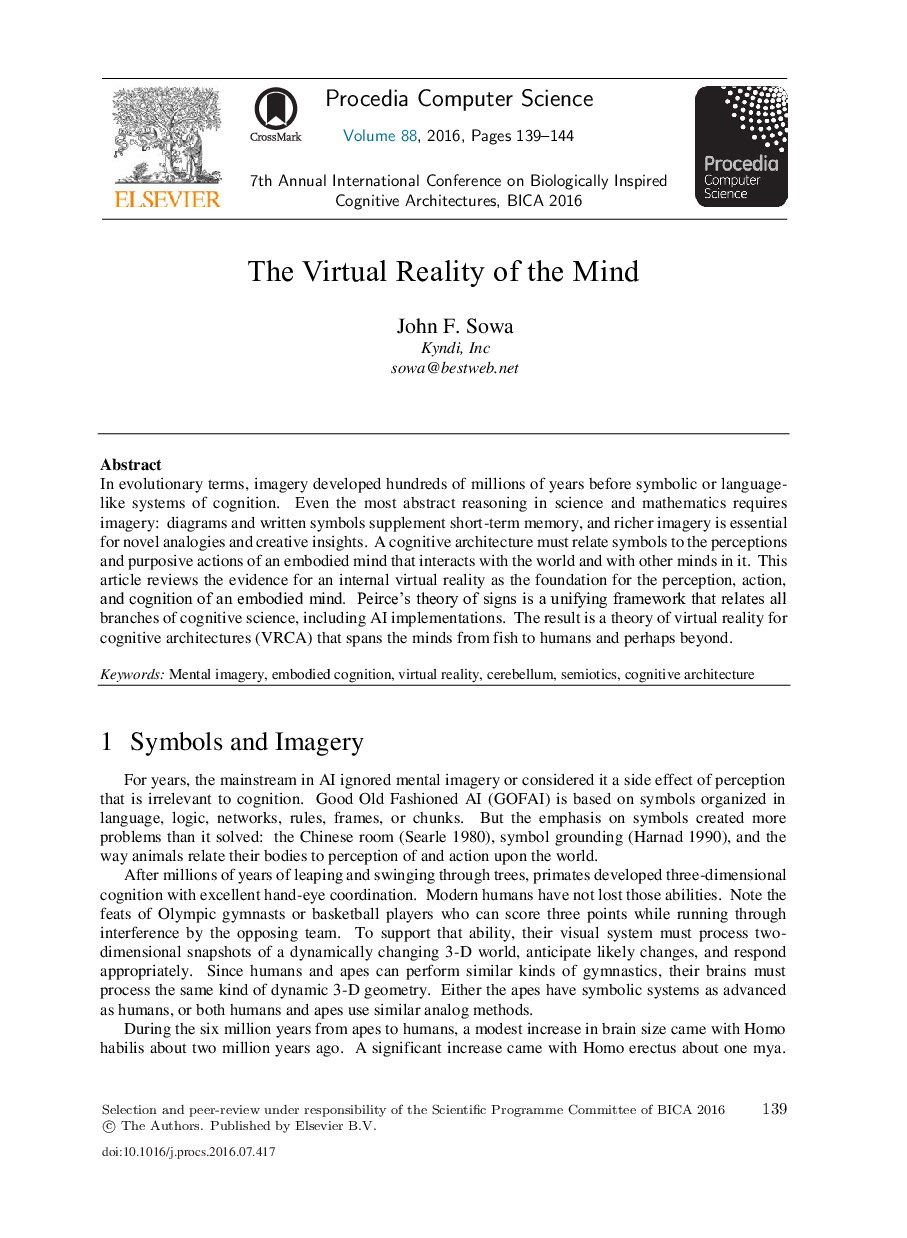| Article ID | Journal | Published Year | Pages | File Type |
|---|---|---|---|---|
| 4962256 | Procedia Computer Science | 2016 | 6 Pages |
In evolutionary terms, imagery developed hundreds of millions of years before symbolic or language-like systems of cognition. Even the most abstract reasoning in science and mathematics requires imagery: diagrams and written symbols supplement short-term memory, and richer imagery is essential for novel analogies and creative insights. A cognitive architecture must relate symbols to the perceptions and purposive actions of an embodied mind that interacts with the world and with other minds in it. This article reviews the evidence for an internal virtual reality as the foundation for the perception, action, and cognition of an embodied mind. Peirce's theory of signs is a unifying framework that relates all branches of cognitive science, including AI implementations. The result is a theory of virtual reality for cognitive architectures (VRCA) that spans the minds from fish to humans and perhaps beyond.
